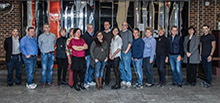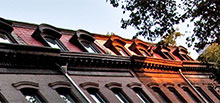CUNY Policy Regarding Cameras in Live Classes and Proctoring Exams
October 14, 2020
Dear Colleagues,
CUNY has updated its guidance to us in Academic Continuity memo #22. Many of you have had specific questions about the use of cameras in synchronous sessions and in proctoring exams. I have copied the relevant sections below and highlighted the most pertinent sentences related to privacy. Please adhere to these policies, which underscore pre-registration notification, student privacy, and the need for accommodation.
Academic Policies, Requirements, and Deadlines
Guidelines Regarding the Use of Cameras During Live Classes
As is the case with many colleges and universities that have chosen online and distance learning modalities as a result of the COVID-19 pandemic, faculty utilizing Zoom, Blackboard Collaborate and other digital technology to deliver course curriculum/material must be sensitive to issues of privacy. To that end, faculty offering classes through web conferencing digital technology like Zoom cannot require that students turn on their cameras during live classes, unless there is a pedagogical need to do so. Per CUNY’s attendance verification policy (pdf), students can meet the engagement threshold for attendance verification through participating in an online discussion about an academic matter, engaging in an online academically related activity, or initiating contact with the instructor to ask a question about the academic subject studied in the course or course-related question, and none of these criteria requires the use of a live camera. In the case of classes in which there is a pedagogical need to require the use of cameras: (1) The requirement for students to be visible on the video should be communicated in advance of registration and enrollment; (2) Students who do not have access to cameras and therefore are unable to comply with the requirement must be accommodated. With respect to whether the use of cameras can be required during the proctoring of exams in web conferencing digital technology platforms like Zoom, students may not be compelled to turn on their cameras during test-taking unless the use of a particular technology or proctoring tool was disclosed prior to the student enrolling in class and/or in the course syllabi. Additional resources pertaining to this policy include Zoom Meetings, Zoom Help, Video Participation Privacy Options, and CUNY’s Cloud System Feature Guide for Faculty.
Proctoring and Camera
With respect to whether the use of cameras can be required during the proctoring of exams in web conferencing digital technology platforms like Zoom, students may not be compelled to turn on their cameras during test-taking unless the use of a particular technology or proctoring tool was disclosed prior to the student enrolling in class and/or in the course syllabi. Additional resources pertaining to this policy include Zoom Meetings, Zoom Help, Video Participation Privacy Options, and CUNY’s Cloud System Feature Guide for Faculty.
Proctoring Software
As I wrote in early October, the university has decided to acquire Proctortrack. A limited number of licenses will be available based on need. The University-wide process to determine allocations and to train faculty and staff is currently in development. Please note as well that prior notification in the course description or syllabus is also a condition for the software’s use. Further information is forthcoming. Please also see Information about alternative assessment methods that you may consider adopting. As always, our Center for Teaching and Learning is there to support your teaching.
Please let me know if you have any questions or concerns.
All the best,
Anne Lopes
Provost and Senior Vice President of Academic Affairs






